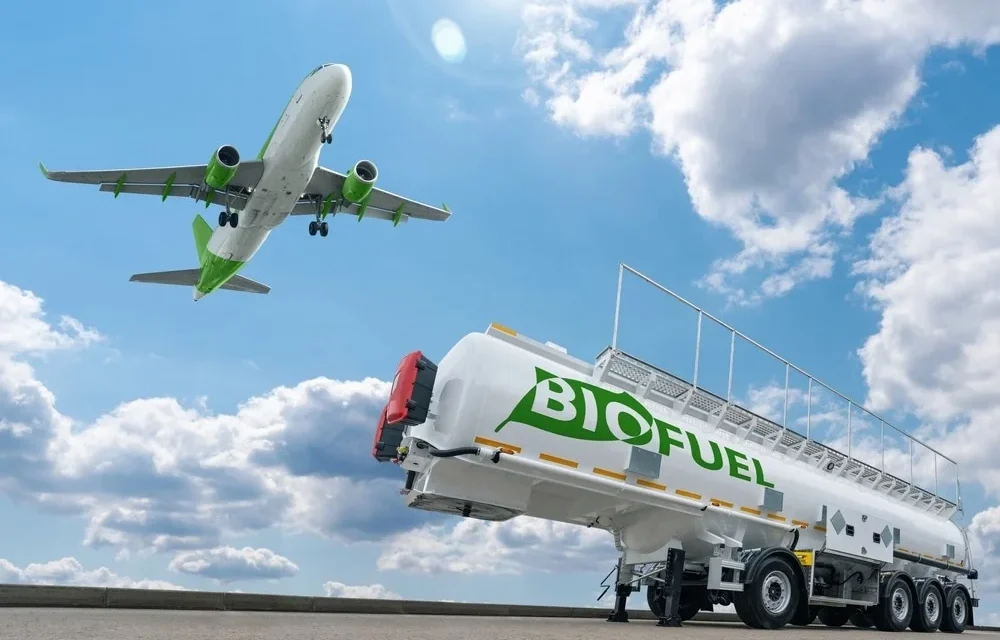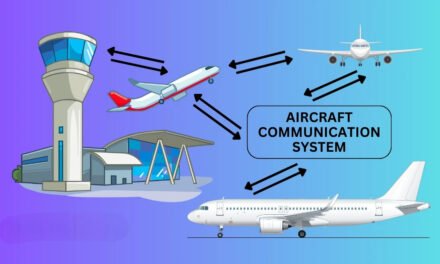Biofuels are a promising alternative to conventional jet fuels, offering significant reductions in greenhouse gas (GHG) emissions while utilizing renewable resources. They are particularly relevant for the aviation industry, where immediate alternatives like batteries and hydrogen face scalability and range limitations for long-haul flights. Here’s an overview of how biofuels are produced and their effectiveness as a replacement for conventional jet fuels:
1. How Biofuels Are Produced
Biofuels, specifically Sustainable Aviation Fuels (SAFs), are produced from a variety of biomass feedstocks through several processing methods. The production process typically involves converting feedstocks into hydrocarbons that mimic conventional jet fuel properties.
1.1 Feedstocks
Biofuels are derived from renewable sources:
- Lipid-Based Feedstocks:
- Used cooking oils, tallow (animal fats), and other waste oils.
- Example: Hydroprocessed Esters and Fatty Acids (HEFA) pathway.
- Lignocellulosic Biomass:
- Agricultural residues (e.g., corn stover, wheat straw), forestry waste, and energy crops (e.g., switchgrass, miscanthus).
- Example: Fischer-Tropsch (FT) process.
- Municipal Solid Waste (MSW):
- Non-recyclable waste converted into syngas or bio-oil.
- Algae:
- High-yield algae strains cultivated for oil extraction.
- Power-to-Liquid (PtL):
- Synthetic biofuels produced from renewable electricity, water, and captured CO₂.
1.2 Production Pathways
Several pathways are approved for producing biofuels that meet jet fuel specifications:
- Hydroprocessed Esters and Fatty Acids (HEFA):
- Converts waste fats and oils into hydrocarbons through hydrogenation.
- Most widely used SAF production pathway.
- Example: Neste and World Energy are major HEFA fuel producers.
- Fischer-Tropsch (FT) Synthesis:
- Biomass or waste is gasified into syngas (a mixture of hydrogen and carbon monoxide) and then converted into liquid hydrocarbons.
- Flexible feedstock usage.
- Alcohol-to-Jet (ATJ):
- Converts alcohols (e.g., ethanol, isobutanol) into jet fuel via dehydration, oligomerization, and hydrogenation.
- Example: LanzaTech produces SAF from industrial waste gases.
- Catalytic Hydrothermolysis (CH):
- Uses high pressure and temperature to convert biomass into bio-crude, which is refined into SAF.
- Power-to-Liquid (PtL):
- Combines green hydrogen and CO₂ to produce synthetic fuels, offering near-zero lifecycle emissions.
2. Effectiveness as a Replacement for Conventional Jet Fuels
2.1 Compatibility with Existing Infrastructure
- Drop-In Fuel:
- SAFs are chemically similar to conventional jet fuel, making them compatible with existing aircraft engines and fueling infrastructure.
- Blends of up to 50% SAF with fossil jet fuel are currently certified for use, with ongoing research for 100% SAF certification.
2.2 Environmental Benefits
- Lifecycle Emissions Reduction:
- SAFs can reduce CO₂ emissions by 50–80% compared to conventional jet fuel, depending on the feedstock and production method.
- Reduced Non-CO₂ Emissions:
- SAF combustion produces fewer particulates and sulfur oxides, reducing contrail formation and overall climate impact.
2.3 Performance
- Energy Density:
- SAF has a similar energy density to conventional jet fuel, ensuring no compromise in aircraft range or performance.
- Cold Weather Operation:
- Meets the same freezing point and thermal stability requirements as fossil jet fuels.
2.4 Scalability
- Advantages:
- SAF can scale relatively quickly compared to other green propulsion technologies like hydrogen or batteries, leveraging existing infrastructure.
- Challenges:
- Current SAF production meets less than 0.1% of global jet fuel demand, requiring significant investment to scale up.
2.5 Cost
- SAF is 2–5 times more expensive than conventional jet fuel due to limited production capacity, high feedstock costs, and immature supply chains.
- Scaling production and technological advancements are expected to reduce costs over time.
3. Challenges in Using Biofuels
- Feedstock Availability:
- Competition with other industries (e.g., biodiesel, animal feed) and limited access to sustainable feedstocks.
- Cost Competitiveness:
- High production costs hinder widespread adoption.
- Sustainability Concerns:
- Ensuring feedstocks are sustainably sourced to avoid indirect land-use changes and food security issues.
- Regulatory and Policy Support:
- Inconsistent policies across regions slow global adoption and investment in SAF production facilities.
4. Advantages of Biofuels Over Conventional Jet Fuels
- Renewable Source:
- Utilizes renewable resources, reducing reliance on finite fossil fuels.
- Lower Carbon Footprint:
- Significant reduction in lifecycle emissions compared to fossil fuels.
- Reduced Air Pollution:
- Less particulate and sulfur emissions during combustion.
- Global Applicability:
- Compatible with existing aviation systems and infrastructure.
5. Examples of SAF Initiatives
- Airline Commitments:
- United Airlines, Delta Air Lines, and Lufthansa are investing in SAF supply chains and using SAF in commercial flights.
- Global Programs:
- ICAO’s CORSIA incentivizes SAF adoption to offset aviation emissions.
- Production Facilities:
- Companies like Neste, World Energy, and LanzaTech are expanding SAF production capacity globally.
6. Future Outlook
- Scaling Production:
- Investments in SAF plants, such as BP and Neste’s projects, aim to increase production.
- Policy Support:
- Initiatives like the EU’s ReFuelEU Aviation and the US SAF Grand Challenge drive adoption and cost reduction.
- Technological Advancements:
- Innovations in feedstock processing and PtL fuels will further enhance SAF’s viability.
- Global Adoption:
- With supportive policies and industry commitments, SAF could meet up to 65% of aviation fuel demand by 2050, significantly reducing aviation’s carbon footprint.
Conclusion
Biofuels, particularly SAF, are an effective and scalable solution for reducing aviation’s environmental impact while leveraging existing aircraft and infrastructure. While challenges such as cost and feedstock availability remain, advancements in technology, policy support, and industry investment position SAF as a critical component in the transition to sustainable aviation. By complementing other green propulsion technologies like electric and hydrogen, SAF plays a vital role in achieving net-zero emissions in the aviation industry.
Hashtags
#AviationBiofuels #BiofuelsForFlight #GreenJetFuels #SustainableAviationFuel #EcoFriendlyFlightFuels #BiofuelProduction #RenewableAviationFuels #WasteToEnergyFuels #BiofuelFeedstocks #AdvancedBiofuelTech #LowCarbonAviation #CarbonNeutralFlight #ReplacingJetFuel #EfficientGreenFuels #SustainableJetFuels #EcoFriendlyJetFuels #GreenFlightSolutions













